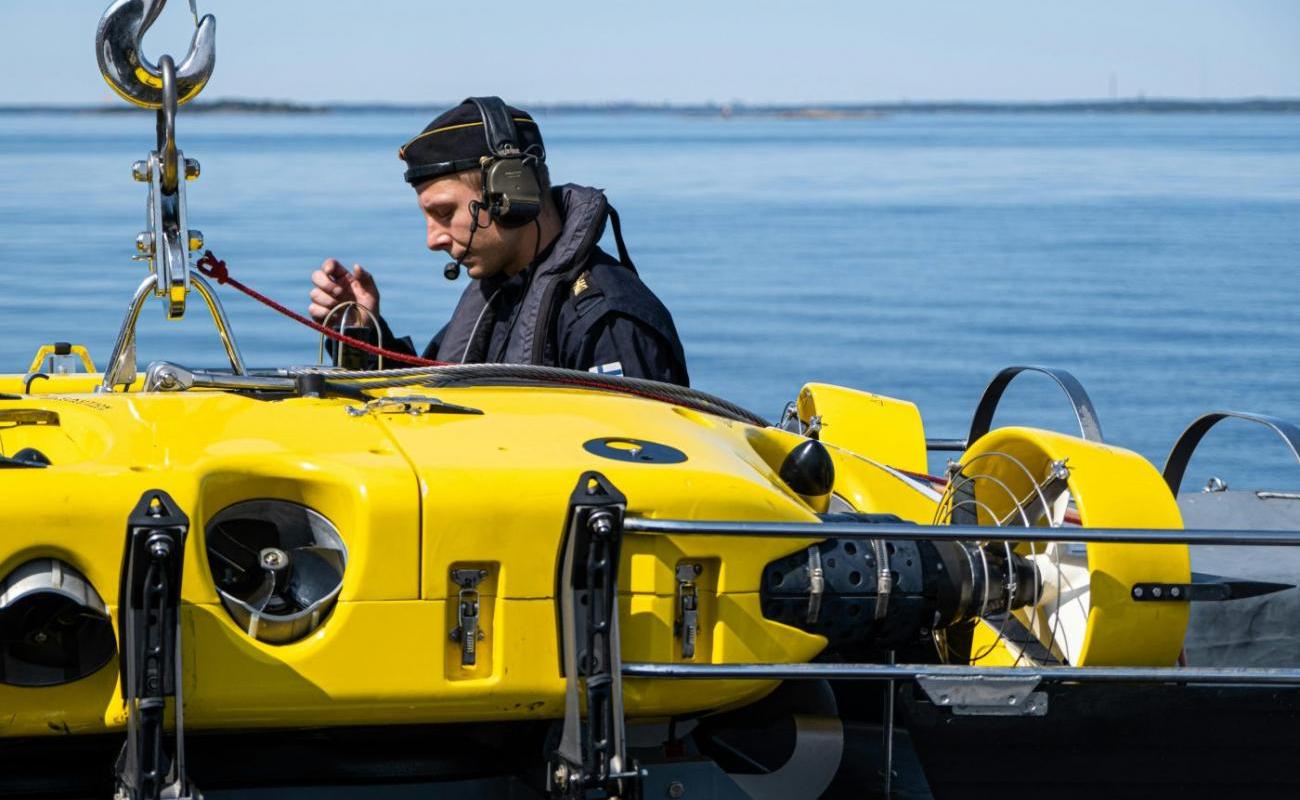Sensors on the Baltic Frontline

For years, the Baltic Sea could be treated as geopolitically peripheral. That assumption is now dead.
Russia’s all-out invasion of Ukraine shifted threat perceptions and revealed just how exposed the Baltic region has become: physically, legally, and digitally.
Russian aircraft regularly harass NATO patrols with simulated attacks, deliberately switching off transponders and flying into NATO airspace to trigger a reaction without crossing into outright engagement. Underwater fiber optic cables and gas pipelines are increasingly vulnerable, as demonstrated by the explosions destroying the Nord Stream pipeline linking Russia and Germany. Less detectable incidents involve gas pipeline leaks, unexplained severance of telecoms cables, and suspected manipulation of sensor data.
Spoofing and jamming of GPS signals have become operational constants in the region. Spoofing forces navigation systems — both civilian and military — to display false coordinates. Jamming floods the electromagnetic spectrum with noise, degrading communications and disabling automated systems.
At the Digital Baltic Conference in Gdynia in June, several technical briefings highlighted how these tactics are being countered by new-generation Polish defense tools. One Warsaw-based start-up is prototyping global navigation satellite system (GNSS) verification systems that flag anomalies within milliseconds, adding to Poland’s European Space Agency-funded studies on the issue, while Swedish research has demonstrated encrypted mesh networks resistant to directional jamming.
Advanced solutions are being developed around time synchronization protocols and distributed sensor networks. The former allows ships, radars, and drones to remain coordinated even when communication links are degraded. Sensor networks, deployed across maritime and coastal areas, detect acoustic, thermal, and electromagnetic signals, allowing for passive monitoring of vessel activity, drone presence, or undersea movements. In such a heavily surveilled environment, constant synchronization and quiet data collection are essential for early warning and response.
A recent €120m ($117m) deal with a Polish-Israeli consortium will provide Poland with radars for coastal surveillance. Warsaw is thus increasing its maritime situational awareness capacities ahead of assuming command of the Command Task Force Baltic in 2028. Such a system integrates radar feeds, satellite data, acoustic monitoring, and electromagnetic signatures to provide a comprehensive view of maritime activity above and below the surface. To be effective, it requires constant sensor calibration, secure transmission protocols, and real-time analytics.
Smart subsea cables have emerged as one of the most promising tools, and the EU is paying attention. These cables, traditionally used for data transmission, are now being equipped with environmental and acoustic sensors that can detect unauthorized seabed activity, pressure anomalies, or mechanical interference. As dual-use infrastructure, they combine civilian utility with strategic intelligence. A cable running from Klaipeda in Lithuania to Gdansk in Poland could provide both high-speed communications and a persistent monitoring layer capable of detecting hostile submersibles or attempted sabotage. Smart cables make the seabed legible and defensible.
Industry is starting to respond to this shifting security logic. In January, one well-established firm, Ultra Maritime, unveiled a modular mission pod system that can be installed on vessels and deployed to monitor electromagnetic and acoustic conditions in maritime areas. The pods relay data via low-orbit satellite links and are built for rapid redeployment. Their value lies in mapping operational environments — capturing physical layouts, signal interference patterns, and situational information — to inform precise defense decisions and turn intelligence into operational foresight.
What is changing is not just the technology but the underlying logic of defense acquisition. Interoperability is beginning to overtake brand loyalty. The NATO Defense Innovation Accelerator for the North Atlantic is designed to fast-track dual-use civilian technologies into military supply chains, offering testing platforms and seed capital. Yet many small firms remain shut out due to procurement inertia, misaligned timelines, or excessive classification barriers.
The Digital Baltic conference underscored a growing problem in defense transformation: data deluge. Systems now produce enormous data flows, but command interfaces are clumsy, training is outdated, and the time taken to make a decision is rising. In one panel, a Baltic naval officer described how real-time sensor data from unmanned systems often overwhelms analysts. Without human-machine interface reform, even the most advanced platforms will fail in high-pressure scenarios.
The fragmentation of NATO’s digital systems further complicates the Baltic security picture. National systems remain siloed, and forced standardization has repeatedly failed. Participants argued that alignment must be driven by converging operational needs, not top-down mandates. Without compatible data frameworks and secure transmission, the alliance risks acquiring more information than it can meaningfully use.
The larger point is that deterrence and resilience now depend on systems that cross traditional boundaries. What matters is not just the quality of tanks, ships, or satellites, but how institutions adapt to hybrid conditions that change faster than bureaucracies. Institutional plasticity — the ability to shift across military, civilian, and private systems in real time — has become the decisive variable. Nowhere in Europe is that more evident than in the Baltic Sea region, where legal constraints, energy vulnerabilities, and technological dependencies intersect.
Europe’s northeastern edge is no longer buffered by geography. The battlefield there will appear in fiber optic lines, seabed sensors, edge compute devices, and in unified procurement systems that replace today’s fragmentation.
Maciej Filip Bukowski is the Head of the Energy and Resilience Program at the Casimir Pulaski Foundation in Warsaw, a non-resident fellow with the Tech Policy Program at the Center for European Policy Analysis.
Europe’s Edge is CEPA’s online journal covering critical topics on the foreign policy docket across Europe and North America. All opinions expressed on Europe’s Edge are those of the author alone and may not represent those of the institutions they represent or the Center for European Policy Analysis. CEPA maintains a strict intellectual independence policy across all its projects and publications.
